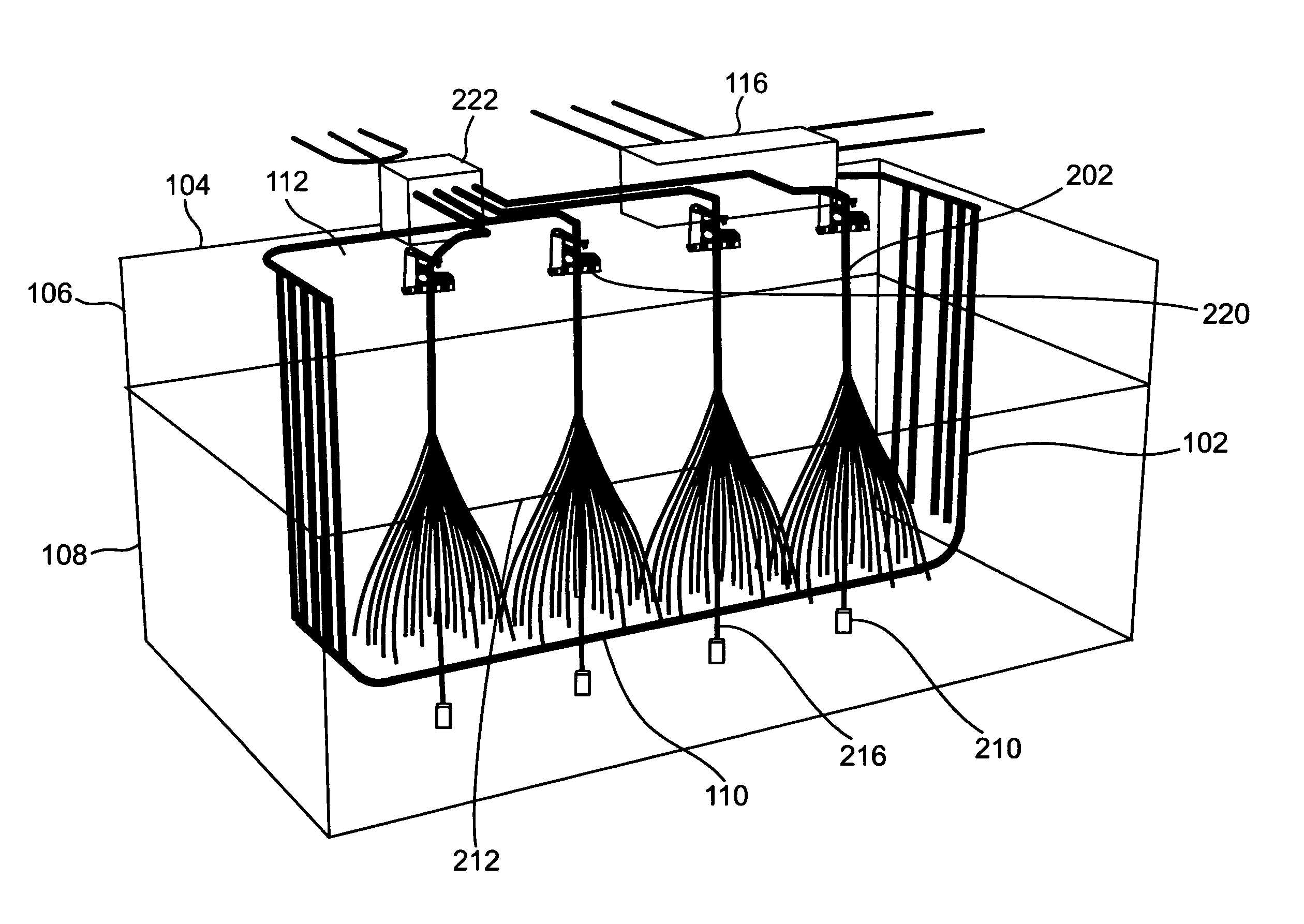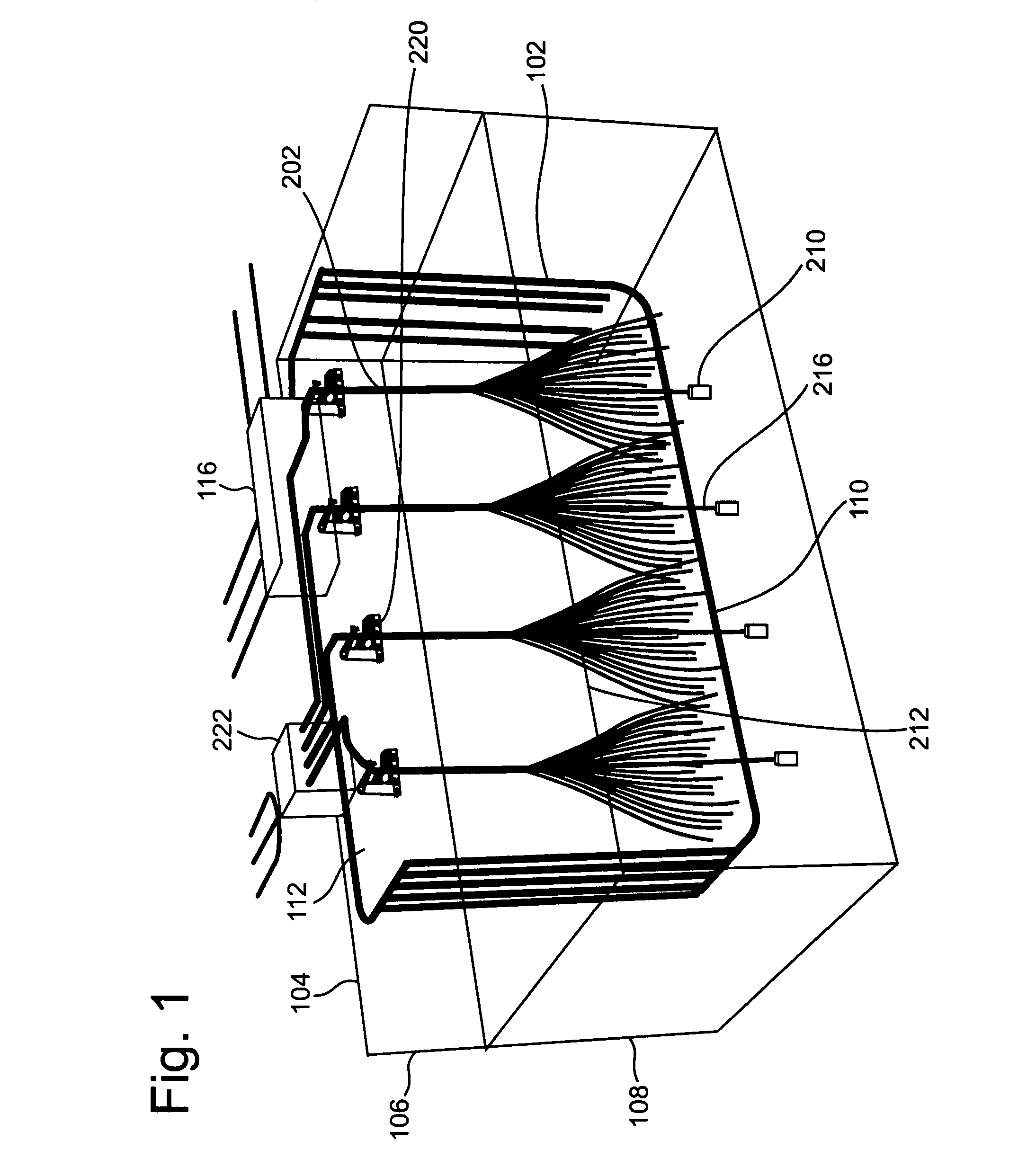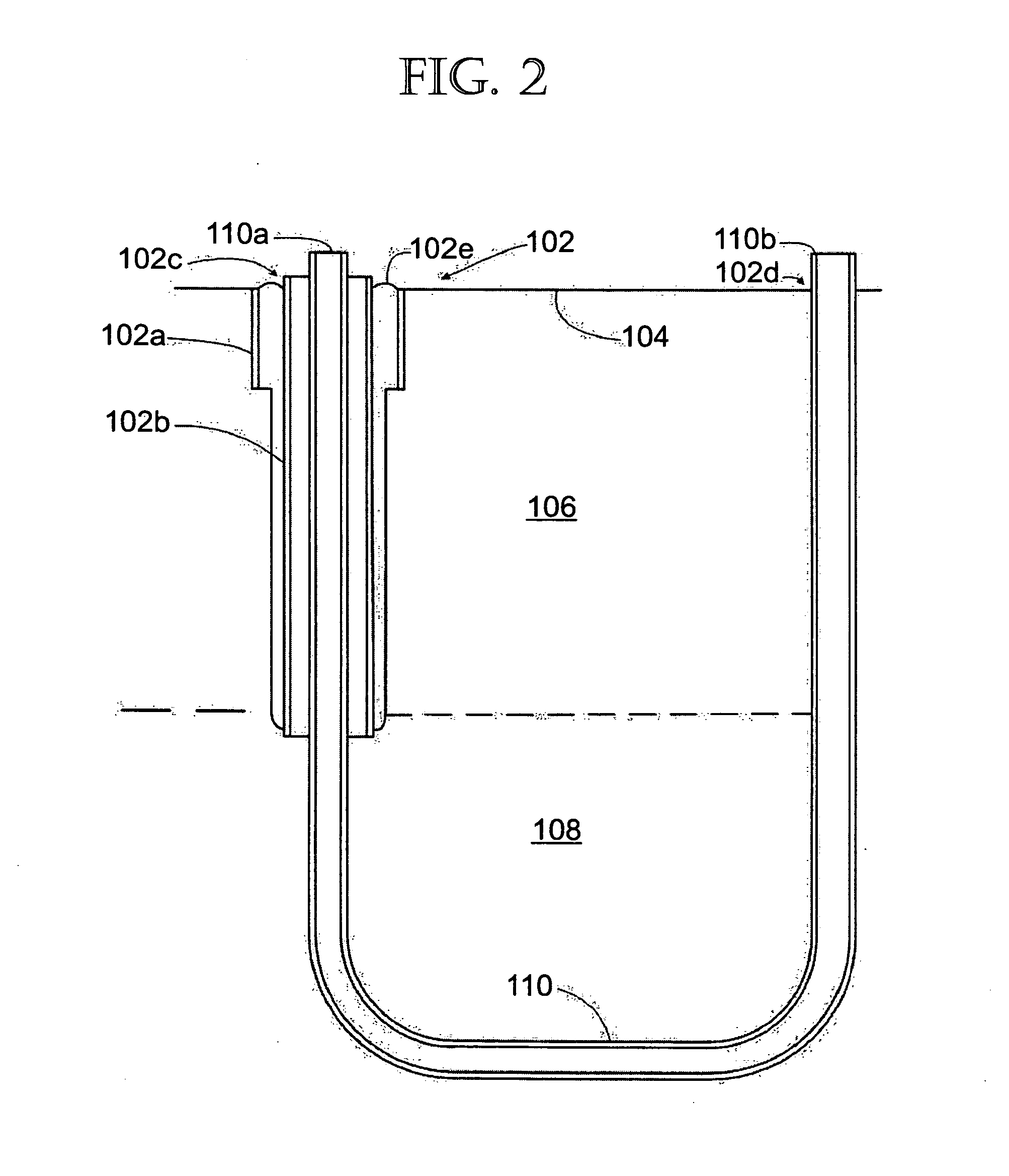In situ method and system for extraction of oil from shale
a technology of oil extraction method and oil extraction system, which is applied in the direction of fluid removal, insulation, borehole/well accessories, etc., can solve the problems of substantial closure, risk of polluting the environment, and risk of losing expensive heating fluid, and achieve the effect of promoting the flow of retort vapors
- Summary
- Abstract
- Description
- Claims
- Application Information
AI Technical Summary
Benefits of technology
Problems solved by technology
Method used
Image
Examples
first embodiment
[0024] For this small scale embodiment, five wells are drilled for energy delivery and four wells are drilled for shale oil and gas recovery from a body of oil shale to be retorted, which is under a plot of land approximately 100 feet wide and 2000 feet long. (The longer dimension of the plot is up to approximately 1000 feet longer than the 1000-foot operational part of the wells, because an up to approximately 500-foot radius of curvature is required for the pipe to make a transition from a vertical to a horizontal orientation, and vice versa—as explained below.) The number of energy delivery wells drilled determines the production rate and the concomitant required heat input. The number and distribution of wells therefore reflects site-specific engineering trade-offs. The entry wells for energy delivery are at one 100-foot wide end of the plot and the exit wells are located at the other end; a single well drilling pad may be used for all five entry wells and another for all five e...
second embodiment
[0070] The second illustrative embodiment is a scaled up application of the principles described above in connection with the first embodiment. This embodiment describes the extraction of hydrocarbons from a plot of 20 acres, where each well pattern is directed to a 400×2000 foot subterranean body of oil shale to be retorted whose top is located 1000 feet below the surface and contains a 1000 foot thick body of oil shale to be retorted. In this embodiment, energy delivery subsystem 100 comprises a row of approximately 20 cased energy delivery wells 102 approximately 20 feet apart from one another. The cased energy delivery wells are divided between two drill pads at each of the entry and exit ends respectively. Each well 102 is drilled from the site surface 104 down through approximately 1000 feet of overburden 106 and then down through approximately 1000 feet of oil shale zone 108. Each well 102 then extends generally horizontally across the site for about 2000 feet, and then retur...
PUM
 Login to View More
Login to View More Abstract
Description
Claims
Application Information
 Login to View More
Login to View More - R&D
- Intellectual Property
- Life Sciences
- Materials
- Tech Scout
- Unparalleled Data Quality
- Higher Quality Content
- 60% Fewer Hallucinations
Browse by: Latest US Patents, China's latest patents, Technical Efficacy Thesaurus, Application Domain, Technology Topic, Popular Technical Reports.
© 2025 PatSnap. All rights reserved.Legal|Privacy policy|Modern Slavery Act Transparency Statement|Sitemap|About US| Contact US: help@patsnap.com



